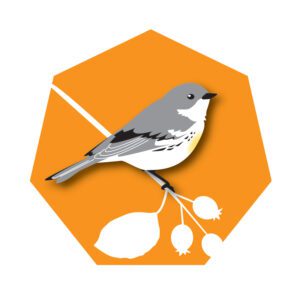
Serviceberrries bloomed earlier this year. Baltimore orioles showed up at feeders sooner than expected. The “brr-wum” call of the bullfrog was heard even before what normally would be the day of the last frost.
Is global warming making our springs earlier and longer, or is this year a fluke? Area scientists and nature lovers say it’s too soon to tell.
“Climate change makes the weather more variable and unpredictable,” says city ornithologist Juliet Berger. Just last year, she points out, Ann Arbor had “snow, ice, and below-freezing days in April.” With no worms to hunt, robins came to her feeder—“and they aren’t feeder birds.”
In their forays outdoors, retired naturalists Faye Stoner and Ron Gamble, a couple, noticed a number of native orchids, trout lilies, and Spring Beauties, all native wildflowers, blooming several days earlier than usual.
Some migratory birds arrived as early as February. And Stoner heard bullfrogs call almost two weeks ahead of their usual schedule: “I usually hear them in June,” she says. Gamble adds perspective. “Stuff outdoors can change so fast,” he points out. “People get the idea ‘Oh, my God, it’s a nature catastrophe!’ But it’s a week or two of changes.”
“I feel okay saying a lot was early this year—frogs, wildflowers, birds returning,” Stoner says. “But I wouldn’t say it’s a trend. It’s just a spring that was early.”
Stoner says that in years when birds arrive ahead of their preferred food sources, some will “eat yucky fruit” if they have to. Some insect eaters, such as tree swallows, will eat last year’s red velvety berries of staghorn sumac on a cold day in April when little else is available for them.
But Christopher Dick, U-M professor of ecology and evolutionary biology, explains that some birds and other pollinators are more “rigidly scheduled. If the insects emerge around April and the flowers come out earlier, the pollinators won’t be around when they need them.”
Bumblebees, for example, have an amazing way of pollinating tomatoes: When the bee comes maybe a millimeter away, it buzzes, and that motion prompts the pollen to shoot from the plant! But bumblebees need to be in a certain climate zone to pollinate a variety of plants. If our climate here gets warmer, the bumblebees could move further north. Then who would pollinate our tomatoes?
Stay tuned. Scientists, naturalists, and nature lovers are still collecting data.



